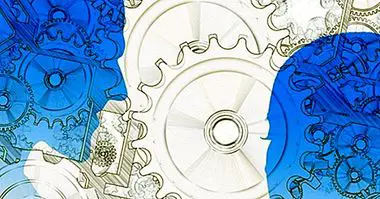10 curiosities about the dreams revealed by science
When we sleep, also we dream . At least in some concrete phases of the dream, in which we imagine unreal situations , product of our unconscious. These dreams can be emotional, magical or strange, and can even be chilling, like nightmares.
Although Psychoanalysis has long provided the basis for the interpretation of dreams, scientific research around the world of dreams has not yet been able to determine exactly why we dream or know what causes us to dream some specific things.
On what (little) we already know about them, here we leave you these 10 curiosities about dreams discovered by science .
10 curiosities about the dreams revealed by science
Several scientific investigations bring us different conclusions about the world of dreams. Let's meet them. Let us begin!
1. We dream, on average, more than 6 years throughout our lives
Since we are born, we dream. All people dream: it's something common in our species, and in case you're wondering, also those who say they do not dream (they just do not remember dreams, but this does not mean they do not dream). Research shows that we dream during nights in periods of between 5 to 20 minutes. Adding all these small periods over an average life, we can say that we spent about six years dreaming.
2. Most dreams are quickly forgotten
Sleep scientist Allan Hobson revealed, based on his multiple studies on the subject, that 95% of dreams are quickly forgotten , a few minutes after waking up.
Then, it is worth asking: Why is it so complicated to remember the content of dreams?
The explanation has been verified in different experiments. It seems that the changes that occur in the brain during the hours we dream of do not match the way we routinely process information to provide information to memory. The brain scans of individuals who sleep many hours at night have shown that the frontal lobes, brain areas that play a fundamental role in the conformation of memory and memories, remain inactive during the MOR phase of sleep , just the moment we dream.

3. Men and women: different ways of dreaming
Several studies have found certain differences in the way women and men dream. Above all, the differences lie in the content of dreams .
Apparently, men report more cases of dreams in which scenes of aggression are experienced. Women, on the other hand, tend to have slightly longer dreams, and of a somewhat greater complexity (more details, characters, situations ...). As regards who appears to us in dreams, men dream of other men twice as often as women . They dream of characters of both sexes equally.
4. Some dreams are black and white
Approximately eight out of ten dreams are "in color" , but there is a small percentage of the population that claims to dream without colors, that is, in black and white.
In the investigations that inquired about the matter of color in dreams, the experimental subjects were required to select the colors that coincided with the dream they had just had in a graphic, and the soft pastel colors were the most commonly indicated. It seems to be, then, that we tend to dream in pastel colors .
5. Do animals dream? Everything points to yes
Many people have observed how their pet moves its tail, legs or mouth while sleeping. The explanation for these movements may be that animals also dream, although the fact that animals dream is a difficult hypothesis to prove . Researchers believe that they dream, and even dare to say that they pass, like humans, by stages of MOR sleep and not MOR.
One of the greatest scientific evidence that dreams are due to the study of a gorilla that dominated gestural and sign language. At a certain moment when he was asleep, he gestured some images of what he was dreaming about.

6. Can sleep be controlled? The lucid dreams
Have you heard about the lucid dreaming ? It is the phenomenon that occurs when, despite being asleep, we are aware that we are dreaming . Those who have experienced this kind of dreams are able to control and guide the content of the dream.
Approximately 50% of the population remembers having experienced a lucid dream at least once in their life. There are even people who have the ability to control their dreams quite often.
Everything you need to know about lucid dreams, reading this article: "The benefits of lucid dreams"7. Negative emotions are more common than positive emotions in dreams
One of the greatest exponents of sleep research, Calvin Hall, recorded more than 50,000 dreams of students over half a century.
This vast archive of dreams revealed many of the emotions and sensations that we experience during sleep, such as joy, fear, anger ... But the emotion that was most commonly found was anxiety and, in general, the negative emotions (fear, hopelessness, sadness) they predominated before positive emotions .
8. Blind people also dream
Blind people, despite not being able to see, also dream. Those blind people who were blind at some time in their life have the ability to reproduce images and visual content in your dreams .
In the case of the blind from birth, their dreams are somewhat different: they represent dreams through other senses, such as smell, hearing or the sensation of touch.
9. Women also dream about sex
An investigation revealed that, contrary to what we usually think, women dream about sex as much as men.
However, it seems that the situations described in the feminine and masculine dreams they vary a bit : women dream of famous men, while men report more dreams in which they have sex in exciting situations.
10. There are contents of dreams we all dream of (universal dreams)
Some dreams are common to all humans . A lot of dreams are influenced by the personal experiences of each person, but although it is strange, researchers have revealed that there are certain recurring themes in our dreams, regardless of cultural differences.
For example, it seems that all people dream of being persecuted, being attacked or falling into a vacuum. Others universal dreams are the experiences in the school setting, feeling immobile, or the embarrassment of being naked in public.
Bibliographic references:
- Martin Dresler, Stefan P. Koch, Renate Wehrle, Victor I. Spoormaker, Florian Holsboer, Axel Steiger, Philipp G. Sämann, Hellmuth Obrig, Michael Czisch; "Dreamed Movement Elicits Activation in the Sensorimotor Cortex", Current Biology, 21, (1-5) November 8, 2011, DOI: 10.1016 / j.cub.2011.09.029
- Empson, J. (2002). Sleep and dreaming (3rd ed.). New York: Palgrave / St. Martin's Press. Hall, C., & Van de Castle, R. (1966). The Content Analysis of Dreams. New York: Appleton-Century-Crofts.
- Schredl, M., Ciric, P., Götz, S., & Wittmann, L. (2004). Typical dreams: Stability and gender differences. The Journal of Psychology 138 (6): 485.



















